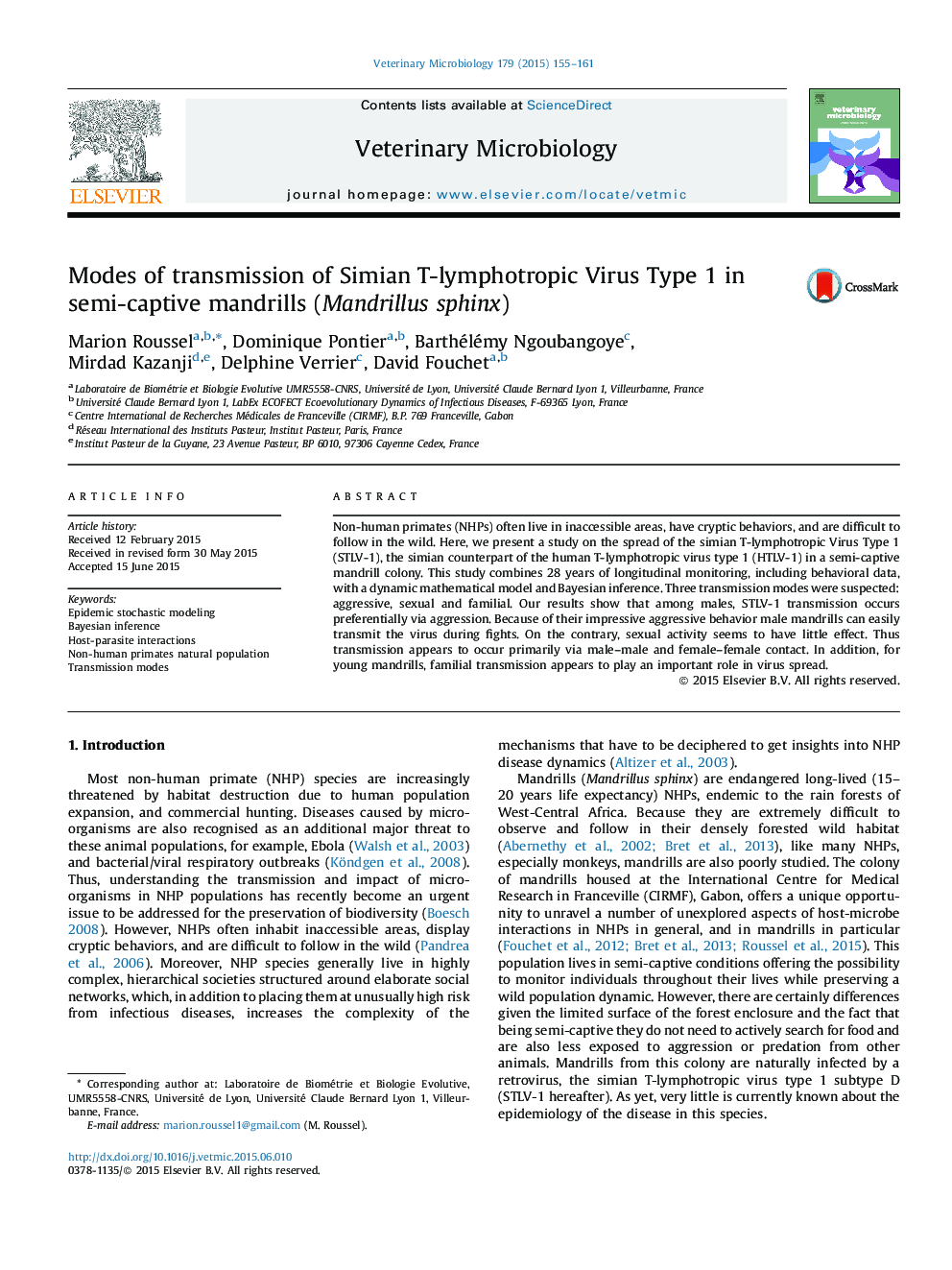| Article ID | Journal | Published Year | Pages | File Type |
|---|---|---|---|---|
| 5800148 | Veterinary Microbiology | 2015 | 7 Pages |
â¢We provided novel insights into the STLV-1 transmission in mandrills.â¢We combined serological data with a dynamical model and a Bayesian inference.â¢Within gender aggressive contacts are preponderant in STLV-1 spread.â¢Unexpectedly, familial transmission plays an important role in the STLV-1 spread.
Non-human primates (NHPs) often live in inaccessible areas, have cryptic behaviors, and are difficult to follow in the wild. Here, we present a study on the spread of the simian T-lymphotropic Virus Type 1 (STLV-1), the simian counterpart of the human T-lymphotropic virus type 1 (HTLV-1) in a semi-captive mandrill colony. This study combines 28 years of longitudinal monitoring, including behavioral data, with a dynamic mathematical model and Bayesian inference. Three transmission modes were suspected: aggressive, sexual and familial. Our results show that among males, STLV-1 transmission occurs preferentially via aggression. Because of their impressive aggressive behavior male mandrills can easily transmit the virus during fights. On the contrary, sexual activity seems to have little effect. Thus transmission appears to occur primarily via male-male and female-female contact. In addition, for young mandrills, familial transmission appears to play an important role in virus spread.
